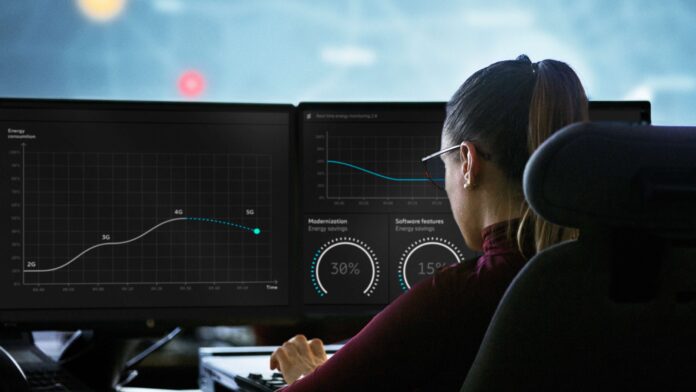Breaking the energy curve as 5G matures requires network modernization and energy-smart operations
The landmark Paris Agreement, signed in 2015, brought sustainability to the global stage in a major way. Just as nations have established their own sustainability strategies, so too have large global corporations, including many in the Information and Communication Technology (ICT) sector. Given the foundational role of information and communications technology to many other economic sectors, the greening of the ICT sector can have an outsize impact in terms of driving sustainability in other verticals. As mobile network operators work to deploy, expand and evolve their 5G networks, what can they do to break the historic increase in energy consumption associated with a generational cellular upgrade while also delivering more environmentally-favorable outcomes to their customers?
Before breaking down how operators can deliver 5G in a more sustainable manner, let’s explore why this is necessary. First and foremost, energy consumption is a major operational expense so reducing that expense is a net positive for the business. Second, major investment and banking firms are considering corporate sustainability roadmaps when valuing companies and making investments. And third, it’s the right thing to do for society.
Ericsson’s Bhushan Joshi, sustainability and corporate responsibility lead, characterized this as “a triple bottom line. It’s a societal expectation, it’s a financial expectation, and then the environmental issue. Companies are moving from shareholder capitalism to stakeholder capitalism. The expectation is not just to create return on investment but also to create positive impacts on society.”
Looking at the past decade, the number of smartphones in use grew from around 1 billion to around 6 billion and data traffic grew 300-fold. In the same time period,the network energy consumption that made the 300-fold data traffic growth possible went up about 64% to 150 terawatts, according to Ericsson research. This time period covered the transition from 3G to 4G. Now, in the move from 4G to 5G, that same growth in energy consumption can be expected. So how do operators break the energy curve?
“You have to take a holistic approach,” according to Mike Murphy, CTO of Ericsson North America. This includes network modernization and software-based energy-smart operations, which serve to reduce overall energy consumption. Another piece of the equation is tapping renewable resources which, it’s important to note, changes energy supply mix and ties directly to reducing carbon emissions, but does not reduce total energy consumption. “We believe by doing it right,” Murphy said, “you can actually reduce total energy consumption over time from where we are now.”
What does that look like in practice? On the equipment side, Ericsson is working with Vodafone U.K. to deploy 1500 new antenna-integrated radio solutions. Based on a test of the radio’s power consumption, Vodafone saw a daily reduction on average of 43% compared to previous generations of radios. During off peak times, that average reduction in consumption spiked up to 55%.
In the context of Vodafone U.K.’s larger sustainability strategy, every radio matters. “There is no silver bullet to manage our network energy consumption,” Vodafone U.K. Chief Network Officer Andrea Dona said in a statement regarding the operator’s work with Ericsson. “It is about putting sustainability at the heart of every decision and adding up all the small gains to make a material difference.”
Energy-smart operations, another pillar of the holistic strategy Murphy mentioned, involves using data analytics, artificial intelligence, and software tools to understand and manage energy consumption of network assets. Ericsson worked with Indosat Ooredoo to operationalize its Energy Infrastructure Operations solution which was a multi-step process:
- First, the partners attached sensors to network infrastructure for remote monitoring purposes.
- Then data analysis was used to identify opportunities for immediate reductions.
- Next AI-based automation kicked in to develop a predictive algorithm to essentially put cells to sleep—reducing power consumption—based on historical and predicted usage patterns.
The end result of this exercise in energy-smart operations was a 3.6% reduction in Indosat Ooredoo’s energy bill and a 4% reduction in carbon dioxide emissions from sites where the Energy Infrastructure Operations package was in place.
On the renewables front, Ericsson is working with Deutsche Telekom to power radio sites using solar energy. The partners installed 12-square-meter solar panels at a radio site in Dittenheim, Germany; the panels are managed using the same software used to manage the radio equipment. Total energy consumption at the site is 21,000 kilowatt hours per year or 60kWh per day. Based on the existing solar configuration,the renewable resource can contribute to more than two-thirds of the site’s total power during peak hours.
Bottomline, Murphy said: “We have a lot of tools and technology available now that we didn’t have before. And if you apply it appropriately and holistically…we actually think you can change the demand trend quite significantly.”
For more information on how to sustainability deploy and operate 5G networks, check out these additional resources:
- A solar solution: Introducing renewable energy to mobile network sites
- Building a greener network: A 360-degree view of a sustainable mobile service
- Breaking the energy curve: An innovative approach to reducing mobile network energy use
- Podcast: Will 5G Change the World? Mike Murphy, Ericsson
- The green credentials of 5G and IoT: Can connected technologies help save the world?

